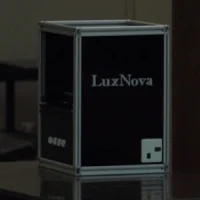The trend toward personal manufacturing and small-scale production is being facilitated by 3D printing, with healthcare applications (including human organ reconstruction) and consumer goods representing areas for immense potential. The technology, which is by now well-established in the aerospace and automobile sectors, brings with it a new business approach that involves personalisation of high-quality products.
New market analysis by Frost & Sullivan suggests that 3D printing will increase its market share to 40 percent this year. The findings appears in their report titled 3D Printing Technology – 9 Dimensional Assessment. The report provides an overview of the current status of 3D printing, including its business implications and societal impact, based on extensive interviews with market participants.
According to Jithendranath Rabindranath, Technical Insights Research Analyst for Frost & Sullivan, “With burgeoning market potential and growing funding, the 3D printing ecosystem is taking shape. The contribution of multiple industry participants such as confederations, research labs, universities,start-ups, and established firms will further quicken the development and commercialisation of 3D printing technology, products, and services on a global scale.”
“3D printing brings several performance and efficiency advantages to the table that translate into high quality; far greater than what can be achieved through conventional manufacturing,” he continued. “Therefore, organisations are embracing various approaches to expand the application of 3D printing, accelerating uptake especially in Asia and North America.”
Some challenges to the adoption of 3D printing technology include the high initial costs of establishing a rapid prototyping service. Steep investments in the early stages will not immediately be matched by high production volumes. Furthermore, the validity of the technology has not been widely demonstrated for large-scale systems and physical object manufacturing.
These challenges will be moderated as funding increases, and costs are reduced by fewer tooling and process requirements as the technology takes hold. Manufacturing companies, in particular, will also benefit from smaller inventory and lead times.
3D Printing Technology – 9 Dimensional Assessment is a part of the Technical Insights subscription. Technical Insights produces newsletters, research services and technical news alerts related to analysis of international technology business developments.
Source: Frost & Sullivan
Image Credit: Wikimedia Commons










